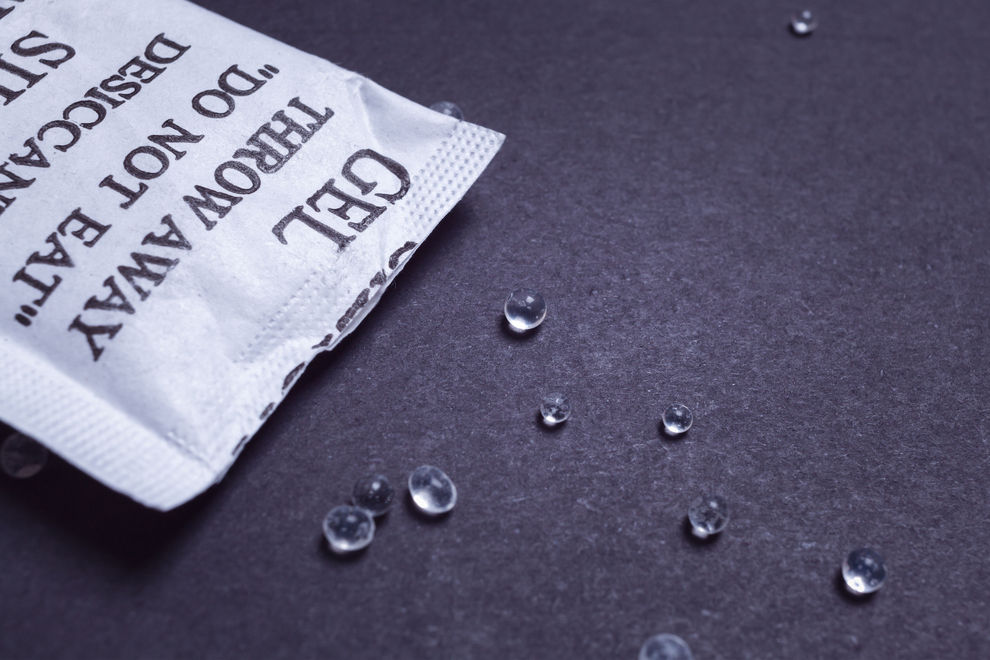While there are multiple options, there are two primary versions of desiccants widely used today:
- Silica Gel Desiccant Bags
- Bentonite Clay Desiccant Bags
As experts in mil spec packaging, we’ve decided to generate a detailed explanation of what distinguishes the two and which would be best for you and your company.
What Is Bentonite Clay?
Bentonite clay is a substance that absorbs moisture and comes from the drying of calcium bentonite. It is a reaction that occurs naturally and is not hazardous. Desiccant clay is chemically inert, non-corrosive, and most importantly, has an attraction to H2O. This makes it the perfect resource to redirect the flow of water particles away from a packaged item and towards the moisture-absorbing desiccant bags.
Benefits of Bentonite Clay
Desiccant clay is the least expensive and among the most cost-effective products that businesses use for protection against moisture. It is effective in non-extreme temperatures against relatively humid environments. In the event that a packaged item exceeds 120 degrees Fahrenheit, there is the potential for the clay’s capacity to absorb the moisture in the air to deteriorate. So long as the package does not exceed this temperature, it can normally absorb just under 30% of its weight in water vapor. If a company intends to use desiccant clay as its primary means of moisture prevention, it would behoove them to consider the environment, paying special attention to the temperatures that the packages will encounter in transit.
What is Silica Gel?
This consists of a large collection of small granules that contain a high concentration of heavy metal salt, the chemical makeup of which is cobalt chloride. Cobalt chloride is especially useful for the purposes of moisture prevention and monitoring because it changes color depending on the amount of water vapor that it has absorbed. When dry, it is usually dark blue. As it begins to absorb the moisture of its surroundings, it begins to turn purple and then finally pink once water has fully saturated the gel. This feature of color indication allows users to keep close tabs on the status of the package and its contents with regards to its moisture levels.
Benefits of Silica Gel
Because water-indicating silica gel contains cobalt chloride, businesses should not ever allow the contents of their packages to come into direct contact with the gel, especially if the contents are items that people may one day ingest. There is the potential of the gel contaminating food and medicine, which is why businesses and courier services should be extra cautious when transporting them, making sure to only use silica gel packs that are exceptionally secure.
Bentonite Clay vs. Silica Gel: Which Is Better?
Both bentonite clay and silica gel packs are effective means of moisture prevention for electronics, food, medicine, etc. However, most bentonite clay packs also contain about 10% silica gel, which is enough to measure the package’s moisture levels. Because bentonite packs tend to be less costly and more cost-effective while still having the moisture level measuring property, in most cases, they are the preferable option between the two.
For information about Edco’s mil spec packaging products, which include desiccant bags, call 718-788-8108 today or fill out our contact form.



